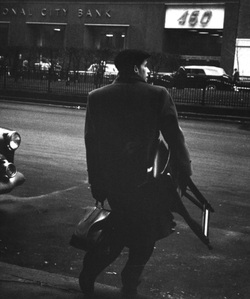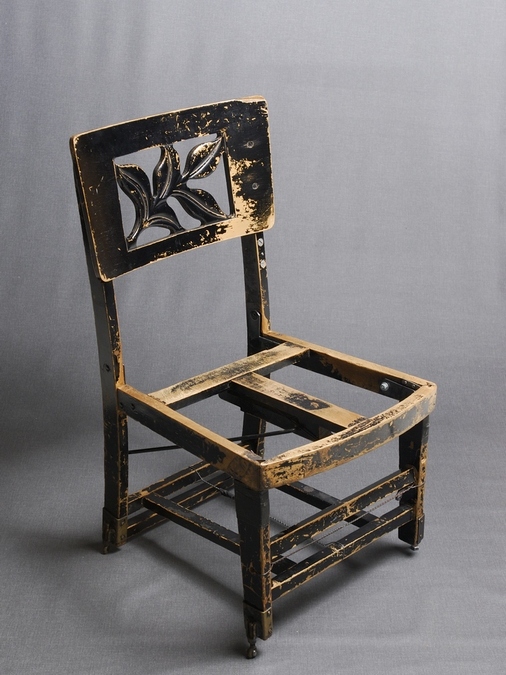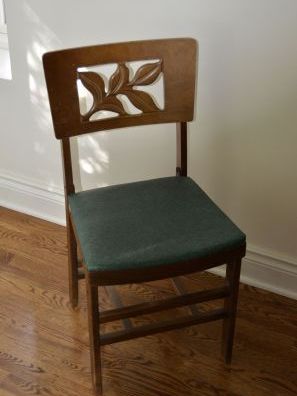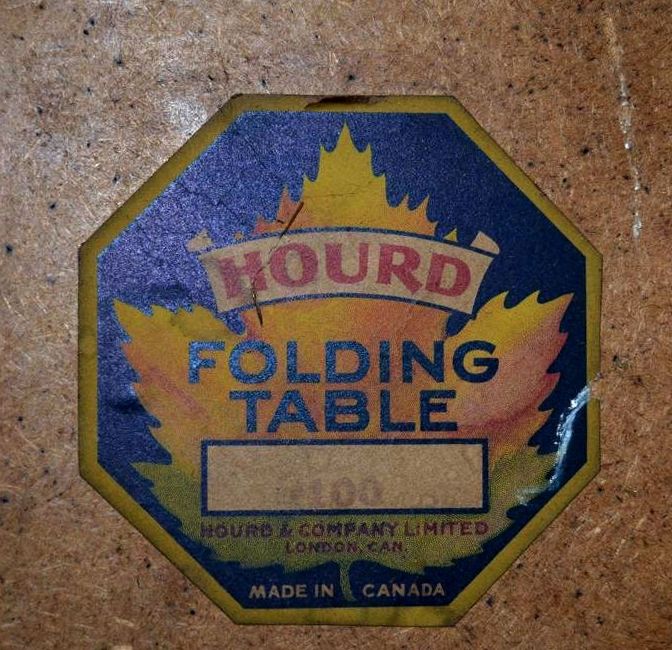
Sadly, he only lived to 50. Yet, the world remains fascinated with Canada’s most famous pianist. His recordings still sell well, and he’s been the subject of many books, articles and films. (For my own contribution to this mountain of material – my book Remembering Glenn Gould – see here.)
And when “Gouldies” get to talking about their hero, one question that sometimes arises is “What would Glenn Gould be doing today, if he were still alive?”
I believe I can propose a modest answer to this question. If he were alive and still playing the piano, he would do so while carefully balancing himself on the crossbars of a broken-down chair that’s six decades old.
Less has been said about Gould’s intense attachment to his chair. Yet it was a matter of no small significance to him.
The chair that Gould used throughout his career was built by his father, Bert Gould, in 1953. Bert took an ordinary folding chair, cut the legs shorter, and installed adjustable extenders on each leg – so that not only the chair’s height but also its angle could be precisely modified.
Gould was clearly obsessed with this thing. He refused to part with it, even after the stuffing fell out of the seat – and despite the creaking noises it made in recording sessions. When his concert manager presented him with a new chair as a replacement, Gould set it aside and returned to his fetish-object.
For many years after Gould’s death, the chair (or what’s left of it) resided in Canada’s National Library and Archives. And it’s now on display in a plexiglass case at Ottawa’s National Arts Centre.
However, its original source has remained a mystery.
A couple of weeks ago, Julian Armour, who runs Ottawa’s Music and Beyond Festival, phoned me with some exciting news. While organizing a fundraising auction for his festival, he received a donation of four “Glenn Gould chairs,” in excellent condition.
The donor had noticed a strong resemblance between Gould’s chair and a set of chairs that he owned. And photographic evidence (above) shows that they are indeed the same chairs. A label on the donated chairs clearly indicates that they were manufactured by Hourd & Company Limited, of London, Ontario, as part of a table-and-chairs set for playing cards.
Armour’s discovery raises the likelihood that other Hourd folding chairs may be discovered. There are probably more of them out there, in attics, basements and garages.
What is an “authentic” Gould chair worth? That question will be answered on Tuesday, when Music and Beyond’s online auction closes. (For more information, see here.)
And you can see for yourself just how attached Gould was to his beloved chair. Here’s a film clip by Bruno Monsaingeon.
© Colin Eatock 2012



 RSS Feed
RSS Feed

